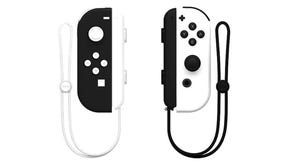Zelda: Breath of the Wild uses dynamic resolution scaling
Does this explain why Switch's portable mode runs smoother than docked?
The Legend of Zelda: Breath of the Wild uses dynamic resolution scaling in order to help maintain its target 30fps frame-rate, to varying degrees of success. It's an aspect of the game we didn't pick up on previously, but eagle-eyed users have spotted a drop in pixel-count in challenging areas, with some suggesting that this is the reason why Zelda in portable mode runs more smoothly than the docked configuration. Our results lead to different conclusions, however.
First up, let's talk metrics. Getting a firm lock on this is challenging owing to the fact that right now, we can't grab direct feed video from the Switch in handheld mode, but based on screenshot dumps, we're pretty confident that when the game hits system limits, resolution drops to 90 per cent on both axes - so the portable mode dips to 1152x648. This represents 81 per cent of native 720p in total.
Our very own Tom Morgan put together a slightly comedic pixel-counting screenshot based on the handheld output, showing how we use the ratio of rendered pixels vs the native framebuffer to figure out rendering resolution. Those interested in doing the maths themselves on this or any other title can get a primer by watching our video guide to pixel-counting. Any system with an internal screenshot dumping mechanism negates the need for a capture solution to get the job done - though working from video is a lot easier in terms of shot selection, particularly on a game using dynamic resolution.
On the face of it, the utilisation of a dynamic framebuffer may explain how the portable mode runs more smoothly. However, further investigation confirms that the same scaling tech is utilised when Zelda is docked as well, with a native pixel-count of 1440x810 at stress points, dropping down from its usual 1600x900. Tellingly, this is also a 90 per cent scaling on both X and Y axes, just like the handheld scaling implementation.
It's the same 56 per cent increase in resolution between the two modes, whether the dynamic scaler is active or not, so the bottom line is that Breath of the Wild's increased performance level in handheld mode isn't explained by the game's ability to change its native rendering resolution. The comparatively small bump in memory bandwidth between mobile and docked configuration remains our best theory here. Undocked, Switch runs its LPDD4 modules at 1331MHz, rising to 1600MHz when plugged into the dock. That's only a 20 per cent increase in bandwidth to sustain a 56 per cent uplift in resolution. Meanwhile, both CPU and GPU are tapping into that same pool of bandwidth, possibly causing contention issues.
As things stand, the dynamic scaler also doesn't explain how the Switch version is capable of outperforming Wii U comprehensively in GPU-bound areas because - yes, you've guessed it - the same scaling technology is also deployed on the last-gen version of Zelda as well. We used Kakariko Village here as an established testing point where performance is poor in order to confirm this. Wii U matches Switch's portable profile, offering up a 1152x648 resolution in these areas.
Further testing may prove otherwise, but right now our contention is that The Legend of Zelda: Breath of the Wild switches between two resolutions depending on configuration - so to confirm, that's 648p/720p on Wii U and Switch mobile, and 810p/900p on the docked Switch. Thus far, we've not seen any intermediate pixel-counts and nor have we seen any dips below a 90 per cent reading on either axis. Bearing in mind that the technique has mostly escaped notice thus far, it looks like Nintendo made a pretty good call on where to draw the line in terms of reducing resolution.
It's an interesting addition to our existing Zelda coverage - and something we should have picked up on earlier - but fundamentally, the differentials in frame-rate between the various configurations remain unchanged in light of this new information. There had been conjecture that if the docked game also employed the resolution scaler, it may have enjoyed the same performance uplift as the portable game. However, this can be ruled out - the tech is already in place whether you're docked or not.
In the meantime, we've seen this intriguing report about WiFi potentially impacting Switch performance. While this could possibly affect some users, we've quickly retested a few Switch titles in flight mode and we're finding that this has no impact on our existing results. However, developer Shin'en Multimedia has highlighted a firmware issue that may improve performance and cut some dynamic resolution drops on its title - Fast RMX. We'll report back on any improvements in a future system software update once it rolls out.










